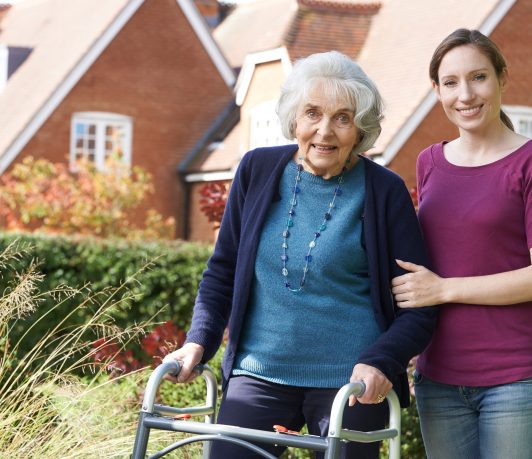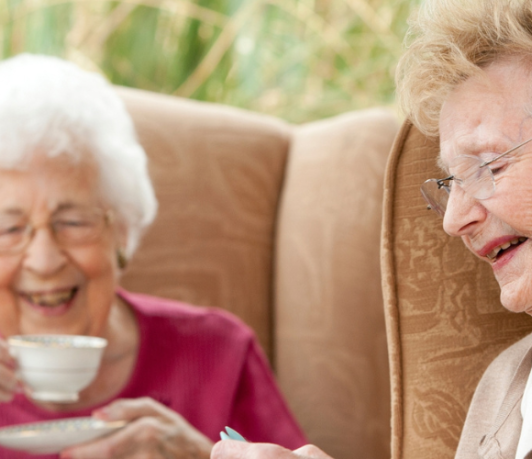Art Therapy Benefits for Older Australians: How to Get Started and Thrive
Aged Care, Home Care |

Ageing gracefully is a complex journey that often requires a holistic approach to embrace challenges and new opportunities for growth and development – especially in terms of our health and wellbeing.
Art therapy, often promoted as a form of expressive therapy and a key mindfulness practice, stands out for its positive impact on our overall wellbeing, including mental health. In this blog, we take a look at the substantial art therapy benefits, enriching the lives of older Australians.
#1 Art and health: a general overview
Ongoing research continues to demonstrate the therapeutic benefits individuals experience when they engage in art programs and activities – with recent international news even reporting art therapy’s growing focus in hospital medicine programs.
Research has long demonstrated art activities can reduce anxiety and stress, support mental health and wellbeing, and help build social connections with others. Additionally, participating in creative activities can help individuals express emotions, which can also lead to improved optimism and a boost in their body’s immune response.
Further, recent evidence has suggested the inclusion of the arts in medicine is also linked to improved blood pressure and less pain and depression for some patients. Additionally, people who have experienced stroke have also reported improved balance and rhythm after taking part in music activities.
#2 Cognitive stimulus and brain health
Much like any other part of the body, the ageing brain benefits from regular exercise. Engaging in art serves as a robust cognitive workout, activating neural pathways as you complete even the most ‘basic’ actions – like selecting colours, manipulating brushes, and participating in the creative process. Several scientific studies indicate that consistent involvement in art activities may mitigate the risk of cognitive decline, contributing to enhanced memory retention.
Art therapy has been colourfully described as a ‘symphony for the mind’, harmonising different cognitive elements. The act of choosing colours stimulates decision-making processes, while the hand-eye coordination required in painting or drawing exercises spatial awareness. Once all put together, these activities collectively enhance various facets of brain health.
#3 Emotional resilience and stress reduction
Beyond being an emotional outlet, art therapy can provide you with a means to express yourself through various mediums such as painting, drawing, decorating, crafting, or sculpting/building. This creative expression is a potent stress-relief tool, reducing cortisol levels and fostering a sense of calm and tranquillity. Over time, art therapy can also equip you with emotional resilience, which can help you to navigate the complexities of life.
Expressive arts may also serve as a channel for individuals to articulate feelings that words might fail to convey. This not only alleviates stress but also offers a therapeutic release, fostering a sense of emotional wellbeing.
#4 Social connection and community building
For many older Australians – whether they reside in residential aged care or receive home care services – art therapy becomes a bridge to build social and community connections. Group art sessions offer a platform for social interaction, nurturing a sense of community and shared experiences. Creating art together not only facilitates conversations but also fosters positive interactions and the formation of lasting bonds, enhancing overall social wellbeing.
Group art sessions also provide a shared platform for older Australians to communicate without words, fostering camaraderie and mutual understanding. This collective artistic endeavour contributes to a sense of community, building shared experiences and connections.
Art therapy activities for older Australians
To delve even deeper into the therapeutic world of art, let’s take a look at some additional activities specifically tailored for older Australians, which you and your loved ones may like to consider getting involved in.
Painting parties: Establishing a dedicated art space at home or within a care community can serve as the backdrop for painting parties. Inviting friends or family to partake in themed painting sessions enhances the joy of creating art together.
Memory collage: Creating a collage from photographs, mementos, and cut-outs can serve as a reflective exercise, engaging creativity while offering an opportunity for introspection and gratitude.
Nature-inspired art: Exploring nature for artistic inspiration, such as through pressed flower arrangements or nature-inspired paintings, taps into the therapeutic benefits of the outdoors – and can further connect you with your environment in a positive way and boost your mood.
Pottery and sculpture: Working with clay in pottery and sculpture provides a tactile experience, allowing older Australians to shape their thoughts and feelings into tangible forms.
Tips for incorporating art therapy benefits into daily life
Whether you or your loved one is looking at giving more focus to integrating art therapy into daily life, you may like to consider the following practical tips:
Start small: Commence with simple art activities to build confidence, such as doodling, colouring, or experimenting with different textures.
Create a dedicated space: Designate a specific area at home as a personal art studio. This establishes a sense of routine and makes engaging in creative endeavours more accessible.
Embrace the process, not just the outcome: Appreciate the journey of creation rather than fixating on achieving perfection. The therapeutic essence lies in the process itself.
Seek professional guidance: For those eager to delve deeper into art therapy, consider joining a class or working with a qualified art therapist. Their expertise can provide valuable guidance for a more profound artistic and therapeutic experience.
In summary
As we look to age gracefully and positively, art therapy emerges as a key tool to support our wellbeing, especially our emotional health. So whether you are looking to engage in art activities through home care services, getting involved in the range of opportunities available through residential aged care, or simply seeking to incorporate more art into your life, there is little doubt that the transformative power of art can breathe new life into your senior years.
We’re here to support you
At Respect, we’re passionate about supporting older Australians to ensure the next phase of their lives are filled with purpose and possibilities. Whether it’s through our network or aged care homes or our home care support and services, we believe that creating a robust calendar of art activities and social programs go hand in hand with providing our residents with engagement, creative outlets, and opportunities to improve their health and wellbeing.
Interested in learning more about our services?
Simply full in the below form and one of our friendly team will be in touch within 48 business hours.




